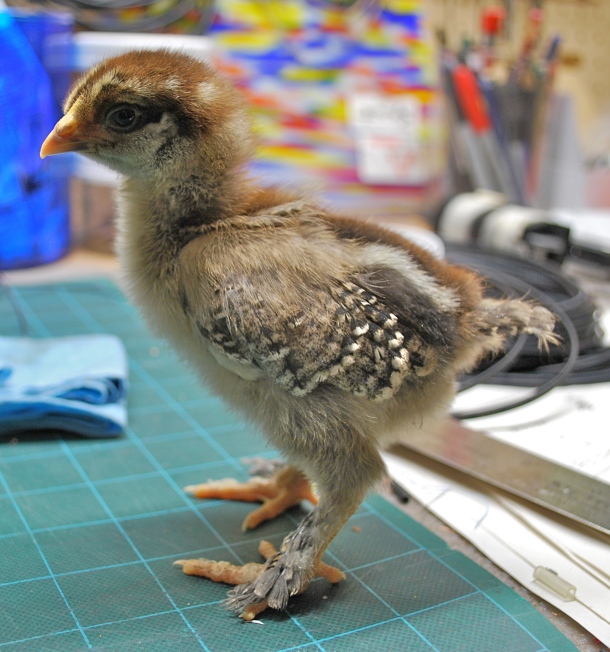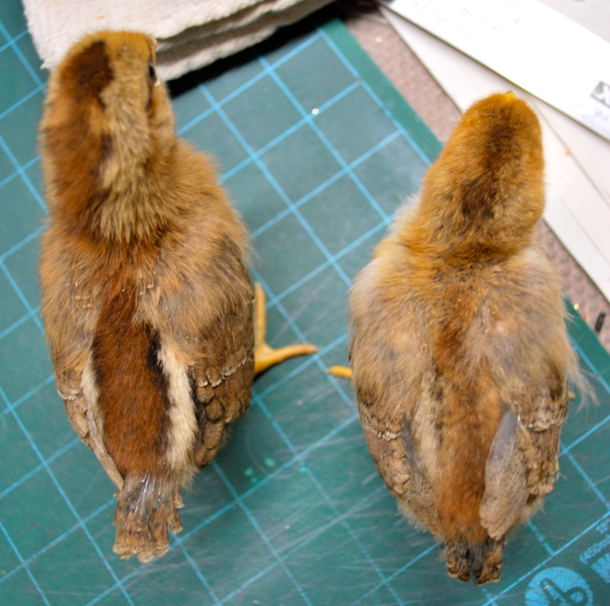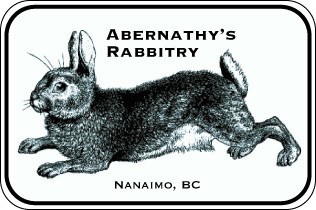
Well, all the baby chickens are doing great. Nobody has died, although there were a couple of mild cases of pasty butt, which is unusual here. I think the heat lamp may not have been quite low enough in the first couple of days.
They are a very nice batch of chicks, they all come running when I make my “chick, chick, chick” call, and they gather around my hand as though it were a mother hen.
I think you can tell a lot about the adult birds from the way they act as chicks. I’ve had very docile, calm chicks like Buff Orpingtons, and I’ve had very skittish chicks like my Black Copper Marans. Although my adult Maran hen is perfectly friendly now, she’s more interested in chicken things like being at the top of the pecking order and getting the best roost at night and yelling for fermented grain in the mornings. Whereas my Buff Orpingtons were more likely to follow me around while I was gardening and carry on chicken conversations with me.
I have my favorite chick picked out, of course:

You may recall that I hatched out eight Light Brahma/Cochin cross chicks. This one is my favorite. She came out with the same partridge markings as the Welsummers, although the spots on her head are more ornate. She almost looks like a turkey poult to me, she’s surely the biggest of the bunch. I’m calling her “she”, because I’m hoping for a hen. Here’s a top view:


After much online research I was unable to conclude whether Cochins and Brahmas are fast or slow feathering breeds. It seems that even color variation may play a part in which sex feathers out first, so all I know is that I have two fast feathering Cochins, and six slow feathering ones. My favorite chick, as you can see in the photos, is fast feathering. There is also a black Cochin chick who is fast feathering. So it could mean two things, either I have two hens and my favorite is a hen, or I have six hens and my favorite is a rooster. He/she is also one of the most friendly and outgoing chicks out of all of them, so does this lean towards roo? Either way something good will come out of these eight.
Below you can see an example of one of the slow feathering black Cochin cross chicks. You can see that his flight feathers are much shorter, he has almost no tail feathers coming in yet, and even his toe feathering is very slow.

Here is one of the reddish-colored Cochin cross chicks that is also slow feathering. The wings are still just little nubs but the red lacing coming in on the flight feathers and toes looks very nice.

Next up are the Welsummer chicks. Although they came from what I would consider very small pullet eggs, they are big, robust chicks that are pretty cool, calm birds. Welsummers can be sexed by color because they are born with the distinctive partridge pattern, and from what I can tell I seem to have four roosters and eight hens. I like those odds!
Female Welsummer chicks will have a defined dark V shape on the top of the head, a dark brown eye stripe, and two defined dark lines on their back. Here’s a top view photo of a future hen on the left and a rooster on the right.

Here’s a side view of the female chick, you can see the dark eye stripe:

And here’s a side view of the male chick, with a weakly defined eye stripe:

And a pair of females seen from the side and from above:
Last but not least are the three tiny Old English Game chicks. They were all fast feathering and of course I’m hoping for all females. They are growing very slowly compared to the large fowl chicks and I may have to separate them out in the next few weeks, since I use a hanging nipple waterer and everyone has to be able to reach it. They’re so tiny I can’t see that being much of a bother though!





Darling little creatures, these are some very nice looking baby chicks!
Very cute! Almost makes me want to dig the incubator out again!
What sex did they end up being? 😊